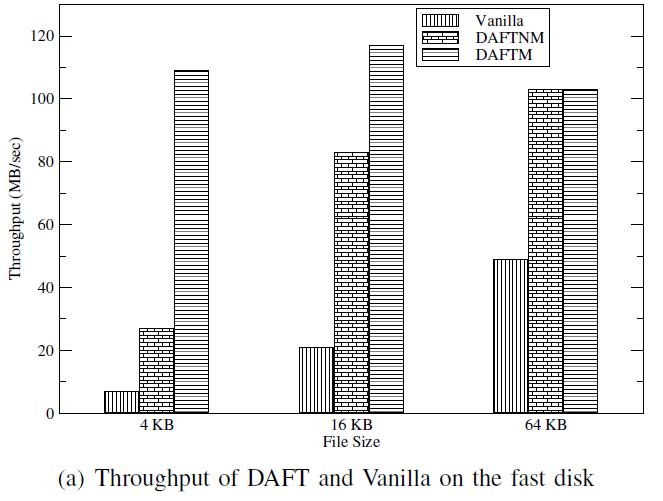The Windows® NTFS
disk filing system was first introduced in 1993, but despite its
undoubted sophistication, not everyone is convinced that it is perfectly
tuned for all possible eventualities. Prompting Dr. Fanglu Guo and Dr. Tzi-cker Chiueh
from Symantec Research. Laboratories, Culver City, USA to  develop their
develop their
DAFT disk operating system. A comprehensive description of DAFT [Disk
geometry-Aware File system Traversal] (a novel algorithmic suite
designed to improve the read efficiency of bulk file accesses) is
published in the eccentrically titled ‘Modeling,
Analysis&Simulation of Computer and Telecommunication Systems,
2009. MASCOTS ’09. IEEE International Symposium on’.
"This paper describes the design, implementation, and evaluation of an optimization to modern file systems that is designed to improve the read efficiency of bulk file accesses. The resulting scheme, called DAFT (Disk geometry-Aware File system Traversal), provides a bulk file access application with individual files while fetching these files into memory in a way that respects the disk geometry and thus is as
efficient as it can be."
But is DAFT better than NTFS?
“It can reduce the elapsed time of
enumerating all files in a file system by a factor of 5 to 15 for both
fragmented and non-fragmented file systems on fast and slow disks.” say
the developers.
Those interested in the fine-grained details of DAFT’s data-driven filing techniques can access the paper in full here:


